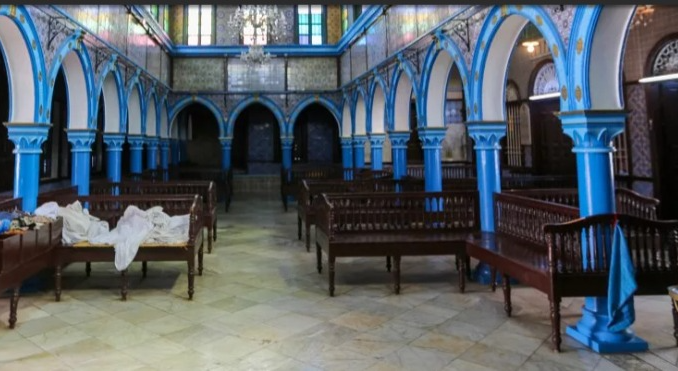
Ancient ruins, whitewashed villages, mosques, churches and synagogues: the heritage of the tourist island of Djerba in southern Tunisia was included on UNESCO’s world list on Monday, the organization announced.
“The committee of UNESCO member states meeting in Riyadh has just approved the inclusion of the heritage of the island of Djerba on the world heritage list,” rejoiced Eric Falt, regional director of UNESCO at Maghreb.
Djerba, which covers 514 km2, is the largest island in North Africa. Its landscape is a combination of desert areas bordering the sea and fields cultivated with palm and olive trees.
Considered the mythological island where in Homer’s Odyssey, Ulysses and his navigators encounter the Lotophages (lotus eaters), Djerba also served as the backdrop for certain scenes on the planet Tatooine in the Star Wars saga.
The Tunisian Ministry of Cultural Affairs welcomed Djerba’s “definitive acceptance”, saying it “does justice to the joint efforts” of the authorities and civil society.
Referring to the “long and tortuous road” that led to this inscription, the Unesco regional director specified that it concerns “seven areas of the island and 24 monuments”.
Djerba is home to Carthaginian and Roman ruins, as well as traditional houses (“houch”) organized around an inner courtyard and equipped with ingenious rainwater harvesting systems.
The island, renowned for its religious mix, boasts churches, synagogues including the Ghriba – the oldest in Africa – and fortified Ibadite mosques (a separate branch of Islam), some of which are underground.
Djerba is also home to typical markets (souks) and a pretty medina (old Arab town) at Houm Soukt.
Former Tunisian Tourism Minister René Trabelsi, a Djerbian by birth, told AFP he was delighted that his island had been listed as a UNESCO World Heritage site. “It’s the result of extraordinary work, carried out with love, and it rewards the work of many people,” he said.
Djerba is “an exceptional testimony to a unique settlement pattern and remarkable human adaptation over the centuries to the constraints of an environment marked by water scarcity and numerous threats from the sea”, said Mr. Falt of Unesco Maghreb.
He recalled that the last time a Tunisian site was inscribed on the World Heritage List was in 1997, with the archaeological site of Dougga.
Djerba “is not a desert island, it’s a living heritage: it’s the island of living together, of tolerance and peace, it’s an island apart, an example for the whole world”, added Mr. Trabelsi.
Tunisia now has 9 UNESCO World Heritage sites including the medinas (old towns) of Tunis and Sousse, the town of Kairouan, the Punic-Roman site of Carthage and the amphitheater of El Jem.
This summer, Djerba received thousands of tourists despite an attack during the Ghriba Jewish pilgrimage that left five people dead in May.
“The synagogue is visited by 1,500 to 2,000 tourists every day,” said Mr. Trabelsi, adding that he had “a thought of course for the people who died” during the shooting.
